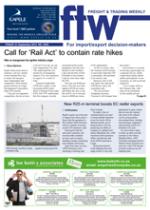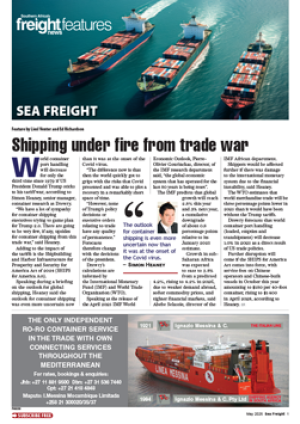Cape Town Container
Terminal is confident that
it can meet the performance
standards agreed with the
Transnet National Ports
Authority despite the
challenges it faces in the
form of wind and fog.
TNPA earlier this year
announced that all terminal
operating licences would
in the future be linked to
a performance agreement
with operators who run the
risk of losing the licence if
they do not meet the targets
set.But according to
terminal manager Brenda
Magqwaka, it’s not
just about the licences.
“Efficiency and service
delivery are key as that
is the only way we will
attract more business and
increase our volumes and
throughput.”
And while the weather
is a major contributor to
delays at the port, leading
to vessel bunching and loss
of productivity, she said
that rigorous wind recovery
plans were in place.
“But there is not much
one can do when the wind
reaches 80km per hour.
It is not safe to continue
working in such heavy
winds and that does lead to
productivity dropping.”
While straddle carriers
are able to work in such
weather and are only
brought to a halt when the
wind reaches 90km per
hour, the entire terminal
has gradually moved away
from using straddle carriers
to rubber tyre gantries
(RTG) which means fewer
straddle carriers are
available in windy times.
“The decision to move
away from the straddle
carriers and have more
RTGs is to allow for more
capacity in our stack. It
was initially planned to
extend the container quay
by 300 metres over one
kilometre but this was
not feasible due to the
environmental impact it
would have,” she said.
“Thus we have to utilise
the existing space better
and that means stacking
containers higher – for
which the RTGs are more
effective.”
Magqwaka said while
high winds and fog did not
mean the terminal came to
a complete standstill – as
work continued with the
available straddle carriers –
it did affect performance.
According to Mgqwaka,
when production has been
affected the terminal is
quick to implement double
shifts and overtime for
workers in an effort to get
back on schedule.
CAPTION
The Port of Cape Town … ‘Efficiency and service delivery are key.’

